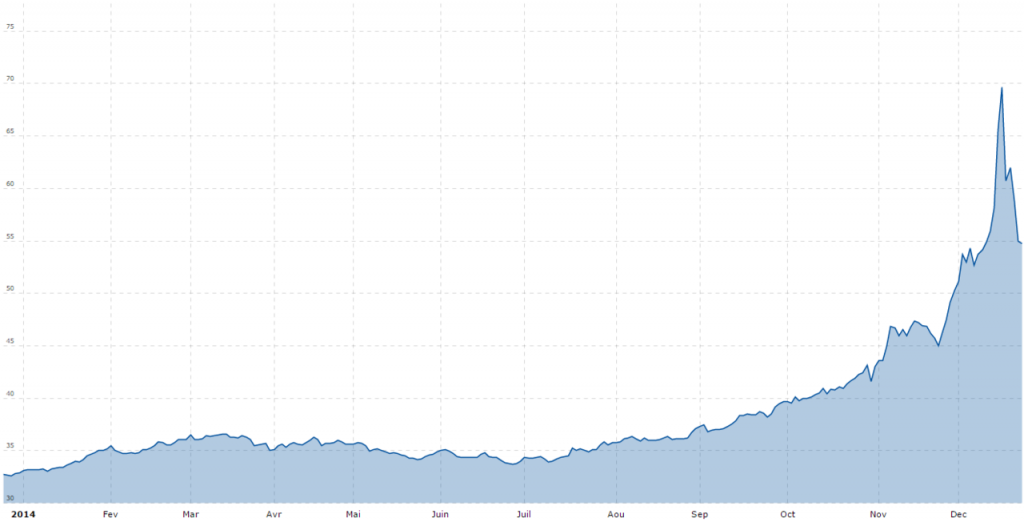
Dollars vs Rouble. 23 december 2013 to 23 december 2014
With the United States still benefiting from the post-WWII financial environment and Bretton-Woods, Washington remains the world’s monetary hegemon, routinely punishing its adversaries by cutting off access to the crucially needed dollar-based global financial system to get its way.
Russia, China, Iran, and others have had enough and have been searching for a way out from under America’s financial thumb. In 2018, the Bank of Russia began selling dollars and buying Chinese yuan, betting the Chicom currency would become a new store of value for central banks around the world. The bet has gone sour as the yuan has weakened dramatically under President Trump’s tariffs and the associated trade war with Beijing.
Russia’s strategy for its foreign currency and gold reserves is causing another problem. Since 2018, the Central Bank has been reducing reserves held in U.S. dollars and building up its stocks of yuan. In total, last year, it cut its dollar holdings in half, and yuan holdings have been increased to 14 percent of total reserves. This is very unusual for a central bank: normally yuan holdings don’t exceed more than 2% of total reserves, according to IMF data. If the Central Bank is still holding a similar amount of yuan (up-to-date data isn’t available), fluctuations in the U.S. dollar-yuan rate could have already cost Russia $1.5 billion, according to economist Kirill Tremasov, who used to be the head of forecasting at the Ministry of Economic Development, reported Russian news outlet The Bell.
As Russia’s foreign currency and gold reserves were valued at $490 billion in March, even a loss of $1.5 billion is not going to create serious problems. But it shows that Russia’s post-2014 desire to “pivot to the east” might be complicated — ironically — by problems coming from the west.
Russia and China have also made progress in using one another’s currency for bilateral trade which also reduces demand for the dollar and reduces transactional risk for both countries.
Currency risk is not the only problem facing the Russian economy as The Bell points out. Falling oil and metal prices on global markets due to a perceived coming global economic slowdown could also hurt the Russian currency, the ruble.
- The Hi-Tech Traditionalist: The Bolshevik Takeover Of America Part I – Agitprop
- Kremlin Warns Google, YouTube To Stop Advertising Civil Unrest, Or Else

